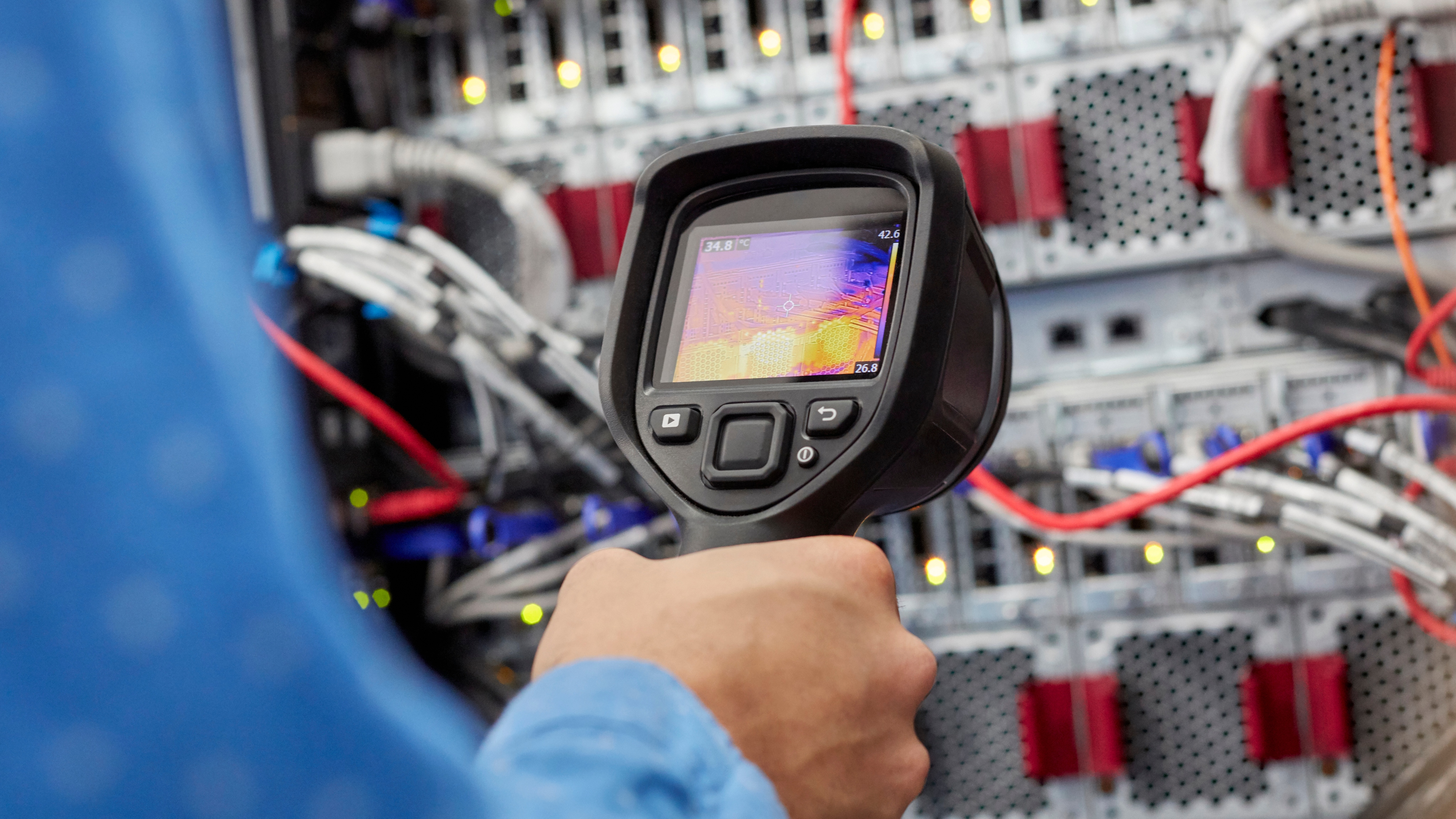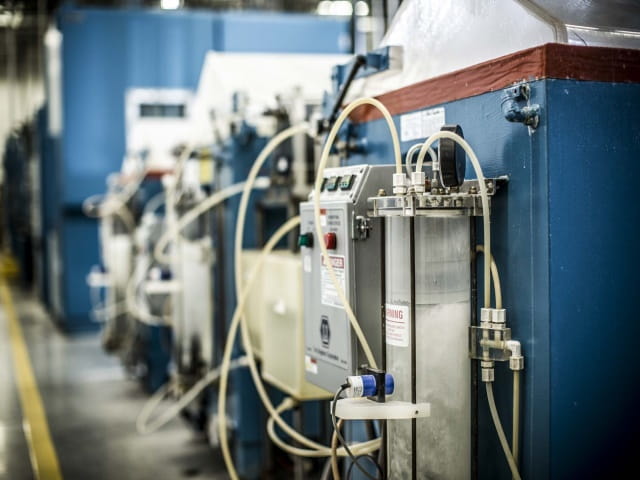Table of Content
- What is Thermal Testing?
- Why is the Thermal Testing Test Profile Important?
- Important Thermal Testing Test Profiles
- Efficient Thermal Testing Solutions
- Key Takeaways
Vehicles must reach an optimum operating temperature regardless of the ambient temperature for efficiency and emissions. However, regardless of the ambient temperature, the engine significantly impacts the temperatures of the components inside and surrounding it. As ramp rates are raised to attain target temperatures as fast as feasible, this might result in substantial thermal stress.
What is Thermal Testing?

Thermal testing is the process of subjecting materials to analysis under thermal control to obtain data on a wide range of properties in materials research. It is a technique for determining a material's capacity to operate safely at various temperatures. Thermal test data allows customers to understand a product's safe working limitations and learn more about the material's general properties and probable lifespan.
Thermal tests measure a substance's physical, mechanical, chemical, and thermodynamic changes. It is also possible to determine the exact temperatures and loads that produce changes in these attributes. For example, thermal testing reveals crystalline melt temperatures, glass transition temperatures, oxidative and thermal stability, and material flammability.
Thermal testing is also used to determine the molecular structure of crystalline and polymers and identify new and unknown compounds. This can lead to improvements in existing materials by identifying flaws and constraints. Thermal testing is often performed at increasing temperatures; however, isothermal testing and analysis at lower temperatures are also performed for the same goals.
Thermal testing is a broad and versatile analysis technique that involves adding thermal control to unrelated analyses. Environmental thermal testing is critical for ensuring product quality and dependability due to various automobile engine systems' elevated ambient and operating temperatures. Therefore, automotive components must normally be tested at both the cold and hot extremities and transition temperatures between those extremes, which commonly correspond to test temperatures ranging from -40°C to +150°C.
Automotive thermal testing is essential for assessing the reliability and performance of automotive components under extreme temperature conditions. Thermal testing services offer comprehensive evaluations of materials and products under various thermal conditions, including the thermal performance test to assess the functionality and efficiency of components in response to thermal stressors.
Thermal Fatigue Analysis is a supplementary test requirement. This form of testing is designed to identify any design flaws, such as coefficients of thermal expansion mismatches between dissimilar materials and the resulting fatigue stresses or, in more extreme circumstances, phenomena such as structural warpage. This test, commonly known as the thermal stress test, evaluates the component's ability to withstand thermal cycling and extreme temperature variations.
Why is the Thermal Testing Test Profile Important?

Thermal profiling, also known as temperature profiling, measures time and temperature throughout a thermal process. The information gathered is critical for understanding a product's experience as well as the overall performance of the process, which directly impacts product quality and consistency. It's safe to say that most manufacturing procedures entail at least one thermal process: monitoring food cooking, hardening metal, or sterilizing medical devices.
Thermal profiling can either validate that the process is working as it should or highlight parts that need improvement. Despite its appearance, thermal profiling is extremely straightforward when using a temperature data logger. A Multi-channel Thermocouple Data Logger is indicated for monitoring temperature and distribution at numerous places or points during the process
Once installed, the thermocouple probes will consistently record temperature measurements, resulting in a temperature profile of the product and its surroundings. The data gathered will reveal how hot/cold the product becomes, when it does so, and for how long. The recorded data can then be used to validate process control or identify where changes can be made to improve quality, productivity, and costs.
Important Thermal Testing Test Profiles
The following section discusses five tests used to benchmark the component's capacity to survive some of these thermal stressors.
1. Wake up at Low Temperature(According to IEC 60068-2-1, TEST AB, COLD)
- This test verifies the component's ability to perform after long exposure to a low-temperature extreme (Tmin).
- The test sample is examined for proper functionality at nominal supply voltage and room temperature.
- The sample is soaked at Tmin for a predetermined time (typically 24 hours), with the electrical wiring harness connected and the supply voltage set to zero.
- The component is turned on and tested for proper functionality following the soak period while still being exposed to Tmin.
2. Degradation at High Temperatures (AS PER ISO 16750-4, HIGH-TEMPERATURE TESTS, OPERATION)
- This test is designed to ensure that the component will continue to function after extended exposure to high temperatures (Tmax).
- The test sample is examined for proper functionality at nominal supply voltage and room temperature. The sample is then heated to Tmax and immersed at this temperature for a predetermined amount of time (usually at least 500 hours). The electrical wiring harness remains connected, and the supply voltage remains constant.
- The test sample is cycled through functional operations representative of normal usage, with performance degradation or failure monitored. The supply voltage can be altered from nominal to minimum and/or maximum values for defined portions of the test.
3. THERMAL CYCLING & VIBRATION (According to IEC 60068-2-64, TEST FH, BROAD-BAND RANDOM (DIGITAL CONTROL), VIBRATION, AND GUIDANCE)
- The component's capacity to endure vibrations that would ordinarily occur under field circumstances is verified by this test.
- The vibration of the test sample is assessed successively in all three primary axes (X, Y, Z). A random vibration test is used to record behaviour beginning at the low end of the frequency spectrum (i.e., road induced) and progressing to the high end of the frequency spectrum (i.e., engine component induced). This frequency range typically covers a 10 - 2,000 Hz frequency range at specific nominal frequency values with a defined power spectral density (G2/Hz).
- In addition to being vibrated, the test sample is subjected to a thermal cycle. The cycle is typically between Tmin and Tmax, with specific ramp rates (°C/min) and dwell lengths. Each thermal cycle typically lasts 480 minutes.
4. PTC - POWER TEMPERATURE CYCLE (AS PER ISO 16750-4, TEMPERATURE CYCLING & IEC 60068-2-14, TEST NB, CHANGE OF TEMPERATURE)
- The test sample is examined for proper functionality at nominal supply voltage and room temperature. The sample is then heated to Tmax and allowed to remain at that temperature for a predetermined amount of time (usually one hour). Following that, the sample is cooled to an ambient temperature of Tmin and allowed to remain at that temperature for a predetermined time (usually similar to the heated dwell time). The temperature change rate between Tmin and Tmax can range from 2 to 15 °C/min.
- The supply voltage can be altered from nominal to minimum and/or maximum values for defined portions of the test. During the temperature transition between Tmax and Tmin, the test sample voltage can also be adjusted to zero.
5. AIR-TO-AIR THERMAL SHOCK (TS) (AS PER IEC 60068-2-14, TEST NA, CHANGE OF TEMPERATURE & ISO 16750-4, TEMPERATURE CYCLING)
- This test is performed in combination with the Power Temperature Cycle (PTC) to validate the component's capacity to survive thermal fatigue and deterioration caused by thermal cycling.
- A full test portfolio is often created by combining a particular number of PTC and TS cycles. They are often carried out sequentially, with functional tests performed simultaneously to ensure component functionality.
Efficient Thermal Testing Solutions
A few tools are required to execute thermal testing to the given specifications efficiently. A test bench capable of performing durability and/or performance tests, with a circuit of measurement rated for temperature extremes; a fluid temperature conditioning system for hydraulic/fluid components (i.e., chiller); an ambient temperature control solution (i.e., thermal chamber); and a PID-tuning and software solution to automate and execute test profiles are required.
Electronic components may typically be tested to these criteria using only a thermal chamber. However, as hydraulic components (such as heat exchangers, valves, and pumps) become electrified, the electronics will be subjected to thermal stress caused by the fluid flowing through the component's body.
Based on the testing requirements, fluid temperature conditioning might be complicated and costly (i.e., low-temperature wakeup or cold start versus thermal cycling). Using liquid nitrogen, single-component testing at low temperatures is simple. Large-scale durability testing ranging from -40°C to +150°C may necessitate using a multi-stage chiller system with a particular heat transfer fluid tailored for the purpose.
Outsourcing short-term testing to a full-service laboratory may be the most cost-effective option. Test facilities will include characterization test benches, thermal chambers, and chillers, depending on the subsystem or component.
Key Takeaways
- Thermal testing is essential to practically all heat-sensitive product and material qualification and characterization operations.
- Thermal testing ensures that your products can perform in any thermal environment, whether you're prepping components for thermal extremes or manufacturing heat-resistant materials.
- In addition, for more such articles, visit OnestopNDT right now! You can also reach out to us to ask any questions related to the above topic or any relevant subject.
References
1. Munichre
-compressed.jpg)








